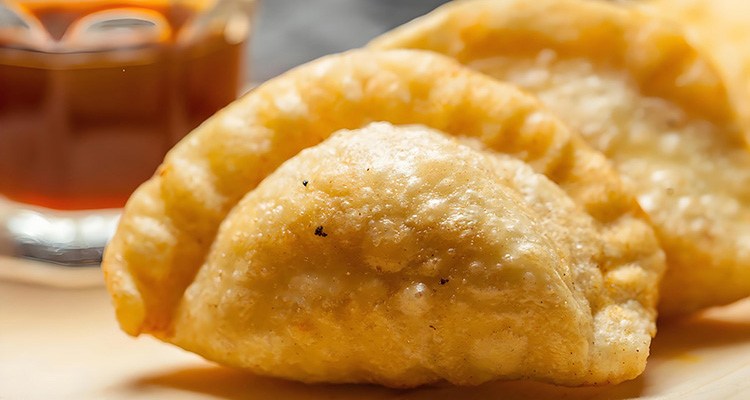Sanhe Rice Dumplings: Hefei’s Golden Snack
1. Sanhe Rice Dumplings: Discover Hefei’s Golden Culinary Treasure
In Hefei, Anhui, the ancient water town of Sanhe is famed not only for its bridges and canals but also for a beloved local snack: Sanhe Rice Dumplings. Unlike Northern wheat dumplings, these use non-glutinous indica rice flour to form a delicate skin wrapped around a savory pork belly filling. Steamed to a warm golden hue, the exterior is slightly crisp while the interior remains juicy. The rice aroma and pork flavor combine into a distinctive Anhui bite that locals and visitors both treasure. Read on to learn the history, ingredients, technique, tasting tips, and where to try them in Sanhe Ancient Town.
2. Origin: Emergency Food Born from the Taiping Rebellion
Sanhe Rice Dumplings have roots in a dramatic chapter of Qing dynasty history. During the Xianfeng era, troops led by the Taiping general Chen Yucheng won a decisive victory known as the “Sanhe Victory.” After the battle, local people sought to feed the soldiers despite shortages of wheat flour. Resourceful villagers turned to abundant local indica rice, grinding it into flour to replace wheat and filling the dumplings with pork. The soldiers praised the result, and the recipe spread locally, evolving into the beloved specialty it is today. This origin story gives the dumpling cultural depth and highlights Anhui resilience and creativity.

3. Cultural Significance: Taste, Memory, and Ritual
In Hefei and the surrounding Sanhe area, these rice dumplings are more than a snack; they are a cultural symbol and an emotional anchor. Families serve them for breakfast, at festivals, and during weddings or memorial events. The golden color symbolizes prosperity, and the dumpling’s rounded shape suggests reunion and completeness. For Anhui expatriates, the smell and taste of Sanhe Rice Dumplings often evoke strong feelings of home. For travelers, tasting an authentic Sanhe Rice Dumpling is a direct way to experience local life and Huizhou food culture.
4. Key Ingredients: Simple but Purposeful
- Rice skin: Local indica (non-glutinous) rice is the preferred choice. Its moderate stickiness allows the steamed skin to hold shape and deliver a lightly crisp texture rather than becoming overly sticky.
- Filling: High-quality pork belly with a balance of fat and lean meat. During steaming, fat melts and flavors the filling while lean meat provides texture. Common seasonings include scallion, ginger, salt, and light soy sauce to highlight the pork’s natural taste.
- Optional additions: Some families add toasted dried tofu crumbs or small dried shrimp for extra depth, but pork remains the core.

5. Making Process: Handcraft and Tradition
- Step 1 — Rice paste: Soak good-quality indica rice, grind into a slurry, drain, then pour into boiling water and stir rapidly to make a cooked rice paste. This “scalding” step helps form an elastic yet slightly crisp skin.
- Step 2 — Dough: Mix the cooked paste with raw rice flour and knead until smooth and elastic.
- Step 3 — Filling: Finely chop pork belly and mix with seasonings; sometimes a splash of stock is added for juiciness.
- Step 4 — Shaping: Pinch small dough portions into cup shapes, spoon in filling, and seal into half-moon or pleated forms. Skilled hands can form dumplings in seconds.
- Step 5 — Steam: Place dumplings on a cloth-lined steamer and steam on high for 15–20 minutes until semi-translucent and golden.
6. Flavor and Texture: Crispy Outside, Tender Inside
A freshly steamed Sanhe Rice Dumpling offers a layered sensory experience. The outer edge has a subtle crispness from the scalded rice dough. Beneath that, the pliable rice skin releases a clear rice aroma. The pork belly filling is savory and juicy, the melted fat melding with the rice’s slight sweetness. The balance is rich but not greasy, with satisfying contrasts of texture and flavor that leave you reaching for another.

7. How to Eat: Serving Tips and Pairings
Always eat Sanhe Rice Dumplings hot. Locals typically serve them with a small dish of black vinegar to cut richness and enhance flavor. A light soy-dressed chili or local hot sauce is another popular option. Pair them with warm soy milk or a light congee for a complete breakfast, or include them as part of a larger meal alongside clear soups and steamed greens.
8. Traveler Tips: Eat Like a Local
- Where to find the most authentic: Visit Sanhe Ancient Town. Family-run stalls and long-established restaurants on the old street—places often named in English as “Old Town Restaurant” or similar—still make rice dumplings by hand.
- Ordering: Rice dumplings are usually sold by piece or by steamer (4–6 pieces). Ask for vinegar and chili on the side if you like.
- Best season to visit: Spring and autumn offer pleasant weather for wandering the town and stopping for snacks. Avoid major national holiday crowds for a calmer experience.
- Nearby attractions: After tasting, explore Sanhe’s historic bridges, ancestral homes, and museums to pair culinary discovery with cultural sightseeing.
9. Simple Home Version: A Practical Recipe
Ingredients: 200g rice flour (indica), about 180ml boiling water, 150g minced pork belly, scallion, ginger, light soy sauce, salt, white pepper.
Steps: Pour boiling water into rice flour and stir until shaggy; knead into a smooth dough after cooling and rest 20 minutes. Mix pork with seasonings. Form small wrappers by hand, fill, seal, and steam on high for 15 minutes. Note: Home rice flour differs from traditional rice paste, so texture will vary but still captures the essence.
10. Conclusion
Sanhe Rice Dumplings are a culinary emblem of Sanhe Ancient Town and Hefei: a simple combination of rice and pork elevated by history, technique, and local taste. If you visit Hefei, take time to walk Sanhe’s stone lanes and try these golden dumplings fresh from the steamer. One bite connects you to local history and the warm hospitality of Anhui cuisine.


